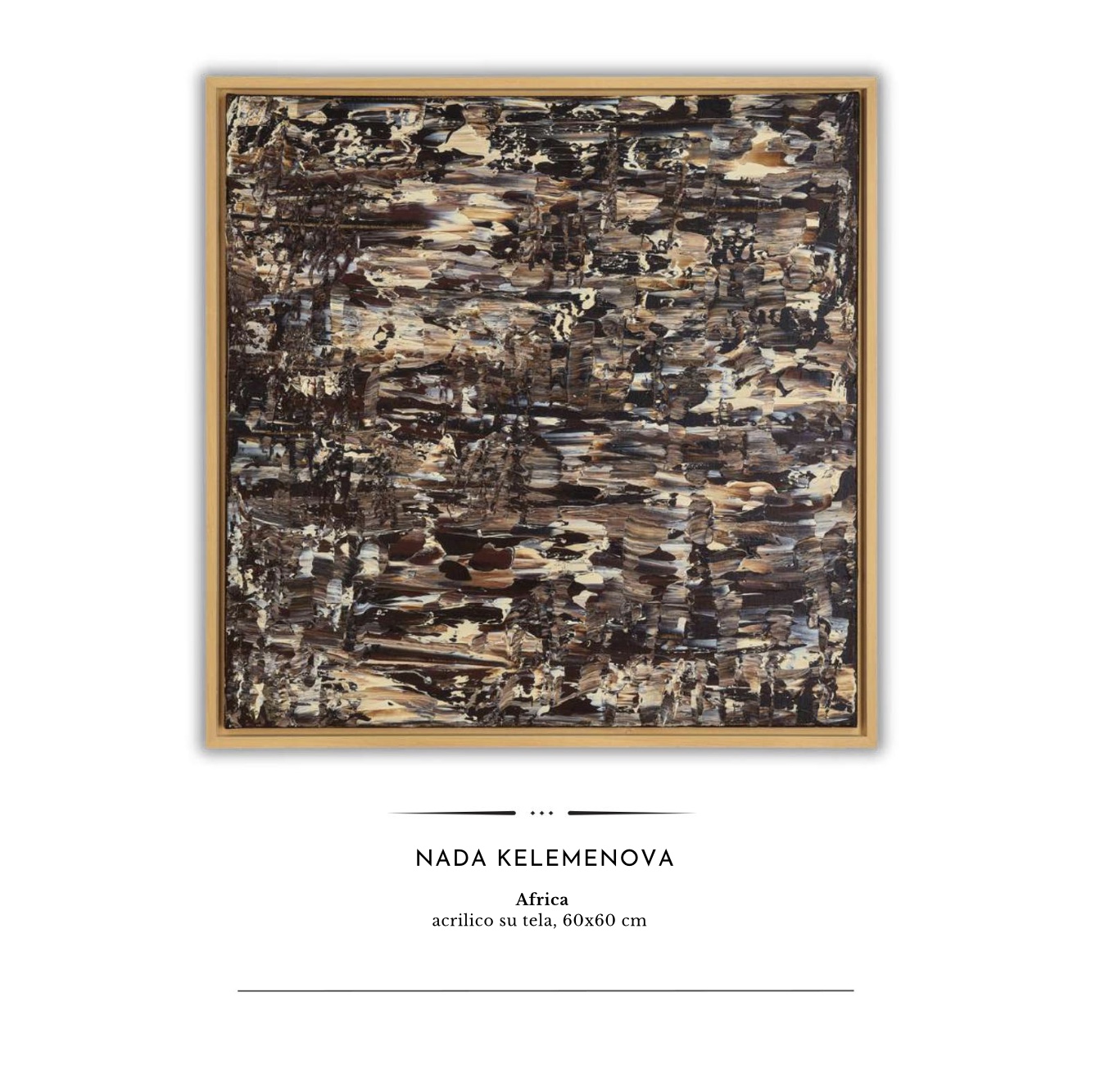Critic
by Francesca Callipari - art historian and critic
A Czech artist with refined chromatic sensitivity, Nada Kelemenova stands out for her intense material expressiveness and a profound, almost ritual connection with the primal forces of nature and the unconscious. In her works, she uses the pictorial surface as a terrain for emotional and symbolic excavation, where the pictorial gesture becomes the trace of an inner world in turmoil, but also a space of harmony and rebirth. The artist moves skillfully between abstraction and evocative figuration, where matter – often dense, stratified, and corporeal – appears as more than an aesthetic vehicle, but a significant element capable of suggesting emotions.

The work “Africa”, with overlapping tones imbued with gestural strength, appears almost visceral, like the primordial force of the earth. Browns, burnt blacks, ochres, and beiges blend into a mosaic of energy, giving the idea of a raw, scratched canvas, crossed by an archaic pulsation. It is not a narrative in the true sense, but an ancestral trace preserved in matter. The title Africa therefore refers not only to a place, but evokes a universal image – an interior vision where instinct and survival merge with spirituality and mystery.
Kelemenova does not simply represent, she invokes. Her work is almost shamanic: it places us before a presence. It can be read as a reflection on our relationship with nature or as pure immersion in a material vision of the world. “The shaman woman”, instead, reveals a different emotional and visual register, but equally intense and suggestive. Here, the palette becomes ethereal and lyrical: violets, bluish hues, and golden structures create a chromatic dance from which small coral-white flowers emerge like delicate apparitions from the turbulent background.
It is not a still life, nor a mere decorative exercise. The flowers, barely hinted at and almost childlike in nature, float in a space where sky, dreams, and consciousness blend. The work speaks of the fragility of beauty, of the strength in revealing it. In this pictorial gesture, softness remains like petals, and the tones almost whisper the violence of the support while emerging in a poetic breath.
The contrast between the dense material and the light flowers creates an eternal tension between chaos and grace, disorder and rebirth. It is a meditative work, in which the gaze can wander without haste, finding in the painterly details a sense of intimacy not explicit, but deeply lived.

